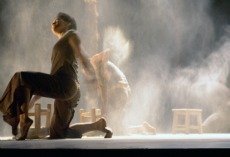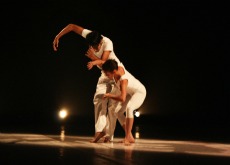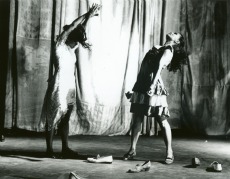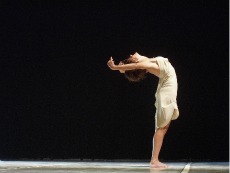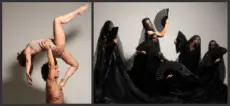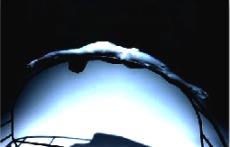| Back to Back Issues Page | |||||||||||||||
 |
|||||||||||||||
|
WHAT A CHOREOGRAPHER EXPECTS FROM DANCERS, The Dance Thinker, Issue #5 March 23, 2011 |
|||||||||||||||
The Dance Thinker Issue # 5, March 23, 2011
1. Research, writing of dissertations or essays’ projects: In the last month, we have had a great participation from dance students that have the task of writing about dance… (read the full note below) Articles 1. What does a contemporary dance choreographer expect from dancers?
We have: - A page for contemporary dance announcements in which you can post your news about workshops, auditions, performances, meetings or any current, related items. - A contemporary dance blog where you can find current information and that will automatically distribute what you post in the announcements page to facebook, twitter and all subscribers to the site’s RSS feed. - A worldwide, contemporary dance directory of schools, companies and websites to which you can submit your contact information. - A special page for asking dance questions. - Several pages in which you can participate with contributions, questions, ratings or comments. - An archive for THE DANCE THINKER back issues, where you can always revisit precedent articles. - A contact page through which you can address to me directly if you have questions, ideas, wishes, suggestions or comments. 2. It is easy to subscribe to The Dance Thinker. If you know somebody that would profit from receiving our e-zine, just let her/him know about the small subscription form at the right column on every page in the site.
News 1. Research, writing of dissertations or essays’ projects: In the last month, we have had a great participation from dance students that have the task of writing about dance. Whether they’re preparing a graduating project draft, a dissertation or trying to write an essay, they all have asked really interesting questions. You can follow the discussions on the following new pages: - How to analyze a choreographic piece? - Lester Horton and cultural plurality. - Choreography and musical influences - The role of society in the evolution of modern and contemporary-dance. - How influential is fashion and music to the development of social and theatrical dance? 1. What does a contemporary dance choreographer expect from dancers?
A few days ago, a young dancer posted a question at our site. She (or he, because no name was entered for the post) was worried about her possibilities of success as a professional, arguing that she was already 21 years old. I answered her question briefly (you can read the whole post here:Too late? (to succeed professionally in the dance world)). Her concern made me remember how often I’ve heard that people believe that the value of dancers lies in their physical condition and skills. Considering that the most popular concert dance form in the world might be ballet, I understand the existence of this general misconception. But, as our site’s main interest is contemporary dance, I decided to write a short reflection related to the topic. It has been of use even for me, as a reminder. I have interviewed three contemporary dance choreographers, without introducing them to the subject as I just did with you. I simply asked them: What do you expect from your dancers? Among the series of things they answered, I was surprised, and glad, to find a strong point in common. The three of them told me that the dancers’ technique and/or shape of movement ARE SECONDARY - CONSEQUENTIAL factors in their creative process and results. So, if acrobatic displays are not their main expectation, what do they wait for? Testimonies: 1. JOSE DARIO FLOREZ. Contemporary dance choreographer; dancer; teacher.
- When creating, I propose an EXPERIENCE, so I’m more interested in the human being than in the ‘dancer’. I don’t worry about the technique but try to make use of their natural conditions. I don’t have soloists because I believe that every dancer has something to give. I like that statement from Pina Bausch that says: “the important thing is WHAT makes dancers move and not HOW they move”. - My dance has an aesthetical, conceptual research and I use narrative discourses and metaphors. Therefore I expect dancers to produce honest movement, free of stereotypes and based on emotions or feelings. Dancers should leave shape beside to achieve this (for me, shape does already exist). When this doesn’t happen, I stop and explore more. The findings must fit the dancer, though s/he should be able to transform it or appropriate it. - I understand choreography as an experience more than as a sequence of movements. So I don’t create separated parts but a net from which things arise. For example, if the dancer gets tired, that will be part of the choreography instead of trying choreography to hide it. If technical virtuosity happens, it is because that arises naturally.
- I expect dancers to be mentally flexible and ready to improvise on stage. They should be spontaneous, observant, attentive to the group and ready to make creative proposals. I try to take them out of their comfort so that they find things that they don’t know about themselves. - Dancers should be versatile and at the service of the project. - “The dancer is the canvas, the skin where the choreographer paints her/his aesthetical and human sensibility” (original words, in Spanish: “El bailarín es el lienzo, la piel, donde el coreógrafo pinta su sensibilidad estética, humana”).
- When creating, I propose a COMMON SPACE. Therefore I expect dancers to be ready for both being directed and create or recreate my ideas. They will be asked to create their roles and express their will. - I prefer to have dancers that want to participate in my project and that are ready to invest on it. For me, dancers are human beings and I like to establish a close relationship with them. - My dance is not only about shape. It includes sensitive, thoughtful or emotional content. I see virtuosity as an expressive possibility and shape as a consequence; there is a physical component which I consider fundamental, but technique should be a medium and not a goal.
- My dancers should be ready to assume the choreographic vocabulary postulated by each project. They should be ductile, adaptable to modification, change and to the development of each proposal. - I prefer more intimate projects. Therefore I’ve worked mostly over the ‘Solo’ format, which allows a close relationship with the dancer and material.
That, I believe, is one of the greatest values of contemporary dance. I know we might get really acrobatic sometimes too. Though, the point here is that choreographers will not necessarily demand it. Maybe, or for some projects, more mature dancers with less choreographic story or habitudes will be better received…
Remember to feel free to answer this e-mail. Let me know what you think. I’m always opened to suggestions, ideas, wishes…
Editor and Webmaster of contemporary-dance.org
|
|||||||||||||||
| Back to Back Issues Page |
